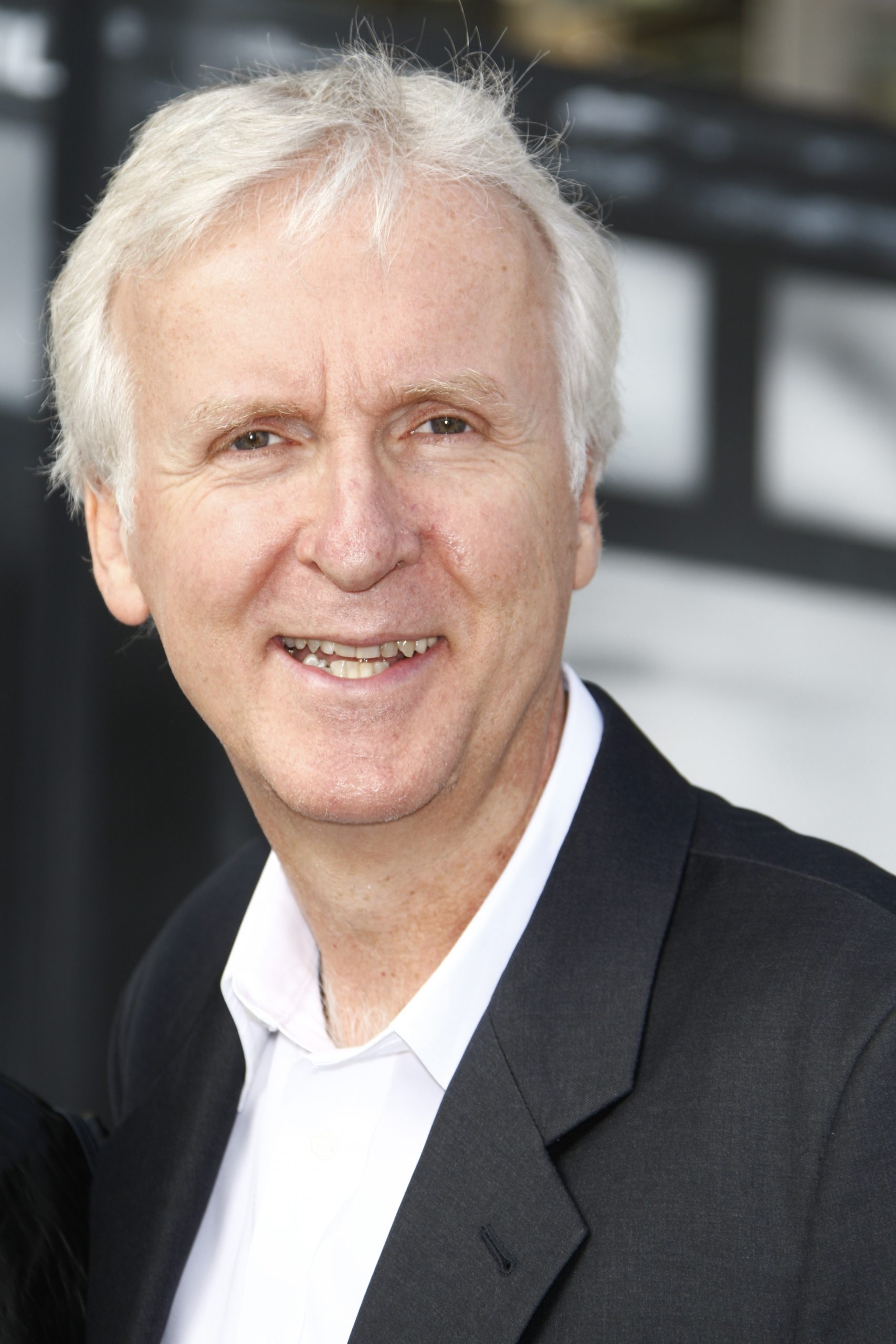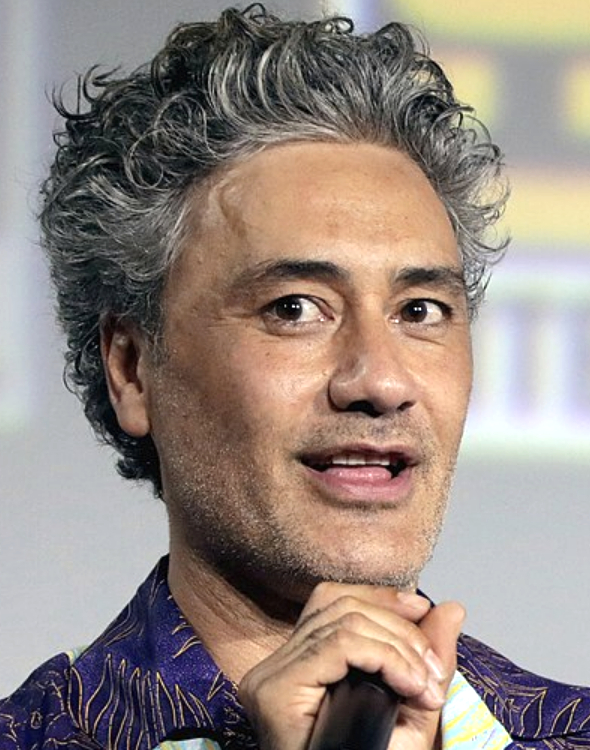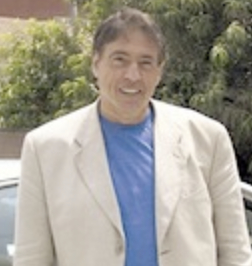August 16
Matthew Tindal

On this date c. 1653-57, deist author Matthew Tindal was born in England. Educated in a country school and at Oxford to study law, Tindal was elected to a law fellowship at All Souls College in 1678. He converted to Catholicism briefly during the reign of James II but returned to the Church of England in 1687, persuaded of “the absurdities of popery.”
His 1706 book Rights of the Christian Church asserted “against Romish and all other Priests who Claim an Independent Power over It” and argued for the supremacy of the state over the church. It provoked loud clergy rebukes and attacks against his character. The House of Commons ordered the book burned by the hangman.
Not to be deterred, Tindal in 1730 anonymously published Christianity as Old as the Creation, using the pseudonym “a Christian Deist.” By publishing the book without his name, he avoided prosecution. In what came to be called “the deist’s bible,” Tindal insisted “That God requires nothing for his own sake. No, not the worship we are to render him, nor the faith we are to have in him.”
Tindal wrote of prayer: “There are few so gross to imagine, we can direct infinite wisdom in the dispensation of providence, or persuade him to alter those laws he contrived before the foundation of the world for putting things in a regular course.” The book was reprinted four times.
According to freethought historian Joseph McCabe, the book “was useful to later Deists, including Voltaire.” (A Biographical Dictionary of Modern Rationalists.) Tindal wrote a manuscript as a rejoinder to answer some 150 critics, which was ready for publication upon his death but was destroyed by order of Bishop Gibson of London. (D. 1733)
“That the not adhering to those Notions Reason dictates, concerning the Nature of God, has been the Occasion of all Superstition, and those innumerable Mischiefs, that mankind, on the Account of Religion, have done to themselves, or one another.”
— Tindal, title of Chapter VIII in "Christianity as old as the Creation" (1730)
James Cameron

On this date in 1954, filmmaker James Francis Cameron was born in Kapuskasing, Ontario, Canada. Cameron directed two of the highest grossing films of all time: “Titanic” (1997) and “Avatar” (2009). Cameron has also written and directed several other blockbuster movies, including “The Terminator” (1984), “Aliens” (1986), “The Abyss”(1989), “Terminator 2: Judgment Day” (1991) and “True Lies” (1994). He has also directed several documentaries with themes that range from the deep sea to Mars. Cameron is a proponent of 3D films and co-developed the digital 3D Fusion Camera System.
In March 2012 he became the third human to reach the Challenger Deep in the Marianas Trench, the deepest known point on Earth. He traveled there in a submarine he designed. He has always had a passion for the deep sea, which is reflected in many of his films and documentaries.
Cameron married his fifth wife, model Suzy Amis, in 2000. He has four children.
“I’ve sworn off agnosticism, which I now call cowardly atheism. I’ve come to the position that in the complete absence of any supporting data whatsoever for the persistence of the individual in some spiritual form, it is necessary to operate under the provisional conclusion that there is no afterlife and then be ready to amend that if I find out otherwise.”
— Cameron, interview with the Hollywood Reporter (March 23, 2010)
Vanessa Carlton

On this date in 1980, musician Vanessa Lee Carlton was born in Milford, Pennsylvania, the oldest in a family of three with a Russian-Jewish heritage. Her father is a pilot and her mother is a pianist and teacher who taught Carlton how to play the piano.
Carlton started ballet at age 9 and was later accepted to study at the prestigious School of American Ballet in New York City. She became discouraged by ballet’s high-pressure environment and found solace in music and writing lyrics. She started playing at gigs in Manhattan clubs while working as a waitress. This led to a deal with A&M Records in 2001.
Her first album, “Be Not Nobody,” launched her into the spotlight at age 21 with the pop anthem “A Thousand Miles.” The album achieved monumental success, selling over 100,000 copies in the first week and earning Grammy nominations for Record of the Year, Song of the Year and Best Instrumental Arrangement Accompanying Vocalist(s). Carlton’s second and third albums, “Harmonium” (2004) and “Heroes & Thieves” (2007), did not match the commercial success of the first and she left the major label system in 2008.
Carlton has said that she “self-destructed” before transforming her career by taking a more organic approach to music making. Her fourth album, “Rabbits on the Run” (2011), is where Carlton mastered her creative aesthetic. It was partially inspired by Stephen Hawking’s 1988 book on cosmology A Brief History of Time. The album’s exploration of cosmology, neurology, physics and a sense of reverence toward the Earth carried over to her fifth album,” Liberman” (2015).
In 2011, when asked what role faith plays in her music, she replied “I’m an atheist.” Carlton married John McCauley of the band Deer Tick in 2013 in a ceremony officiated by Stevie Nicks. Carlton and McCauley live in Nashville with a daughter, Sidney, born in 2015.
“I’m an atheist.”
— Carlton, live-streamed performance (June 7, 2011)
Margaret Downey

On this date in 1950, secular activist Margaret Downey was born in Baton Rouge, La., where she lived until 1957. She was raised primarily by her mother, a Puerto Rican immigrant, after her father of Irish descent left the family when she was 3. She witnessed the racial prejudice inflicted on her mother and her half-sister, a person of color, who had come to live with them.
The family struggled financially and by age 10, Downey was sewing and cleaning houses to make money. By age 15, she had come to identify as an atheist. College was out of the question and she saw only marriage in her future. Pregnant at 17, she married and divorced a man of Mexican heritage by age 21. “My first marriage, to a Catholic man, dissolved when we disagreed on such questions as the baptism of our infant daughter,” Downey said. (“Parenting Beyond Belief: On Raising Ethical, Caring Kids Without Religion,” ed. Dale McGowan, 2007)
“I married again three years later, this time to someone who did not attend church or believe in God. He was kind, honest, reliable, and a terrific father. I was glad to have another child with Tom [Schottmiller] as my loving husband. Matthew was born when my daughter Holly was 9 years old.” (Ibid.) Matt went unbaptized. “Tom’s parents were not religious, and they never went to church. My mother and many others from my side of the family had given up their religious beliefs by then as well.”
Downey’s workplace efforts promoting equality for women (pay, promotional opportunities, fairness in dress codes) often landed her in trouble with employers. Due to her husband’s promotions that led to frequent moves, she stopped and started an interior design business five times.
She founded the Freethought Society of Greater Philadelphia in 1993, then continued her activism by starting the Anti-Discrimination Support Network to combat discrimination against the atheist community. In 1991 she filed a discrimination case against the Boy Scouts of America in Pennsylvania for rejecting her nonreligious son’s application after he’d been a New Jersey Scout previously. The Freethought Society under her leadership formed the Thomas Paine Foundation in 1994 to conduct programs promoting the ideals of Paine’s freethought philosophy. She was named the first president of the newly formed Thomas Paine Memorial Association in 2021.
She has represented the nontheist community since 1995 at several United Nations conferences and is a past board member of the American Humanist Association and the Humanist Institute, as well as a past president of Atheist Alliance International and Reason Rally board member. Downey became a certified Secular Officiant in 2001 and operates Secular Celebrations to serve nontheists’ life celebration needs.
She also serves as an adviser for the Robert Green Ingersoll Birthplace Museum in Dresden, N.Y. Downey’s one-woman play about Ingersoll and his wife Eva Parker Ingersoll was performed at the 25th anniversary celebration of the reopening of the museum. The setting is five years after Robert’s death. Eva reflects on their lives together and invites all her guests (the audience) to dinner.
Along with her essay in “Parenting Beyond Belief,” she has been published in “50 Voices of Disbelief: Why We Are Atheists” (2009) and in Chris Johnson’s 2014 book “A Better Life: 100 Atheists Speak Out on Joy & Meaning in a World Without God.”
After being a co-plaintiff in a federal lawsuit to remove a Ten Commandments plaque from the facade of a courthouse in West Chester, Pa., Downey led the effort in 2007 to place the Tree of Knowledge (a godless holiday tree) at the courthouse to counter religious displays. The tree, decorated with facsimiles of covers of books about atheism, religious skepticism and secular philosophy, is installed annually. “This helps to balance and shows the diversity of the community,” Downey said. “We want people to read these kinds of books so they can make up their minds about religion, not just be spoon-fed by pastors and priests and rabbis.” (Philadelphia Inquirer, Dec. 10, 2008)
Downey isn’t all serious business: “I’m the only Friggatriskaidekaphobia Treatment Center nurse in the world teaching critical thinking skills in a fun way every Friday the 13th.” She also organizes a parade entry every year at Dragon Con in Atlanta at which about 50 costume-clad skeptics parade past tens of thousands of viewers.
“Religion, after all, is based on superstitious nonsense, and people sitting in church pews praying to a god are no different from people sitting in a circle conducting a séance.”
— From Downey's essay "My 'Bye Bull' Story" in "50 Voices of Disbelief: Why We Are Atheists" (eds. Russell Blackford and Udo Schuklenk, 2009)
Taika Waititi

On this date in 1975, actor and filmmaker Taika Waititi (né Taika David Cohen) was born in Raukokore on New Zealand’s North Island. His father, now deceased, was an artist of Māori descent. His mother, Robin Cohen, has Russian-Jewish heritage and taught school. He originally used his mother’s surname for his work in film and writing and his father’s, Waititi, for his visual arts endeavors, i.e., painting, photography and book illustration.
Waititi has called himself a “Polynesian Jew” more connected to his Māori roots in a household where Judaism was not actively practiced. He told the Wall Street Journal in 2022 that he puts more stock in Indigenous beliefs, which include gods representing natural elements. “Our gods are more like the Greek gods. There are stories behind them and they mess with mortals.”
His parents separated when he was 5 and he was raised mainly by his mother. After secondary school, he joined a comedy troupe at Victoria University of Wellington, where he studied theater, earned a B.A. in 1997 and started making short films. “Two Cars, One Night” (2003) garnered an Academy Award nomination for Best Live Action Short Film. “Boy” (2010) premiered at the Sundance Film Festival.
Waititi co-wrote, co-directed and starred with Jemaine Clement in the horror mockumentary “What We Do in the Shadows” (2014), adapted in 2019 for an Emmy-nominated TV series. His directing credits include the Marvel superhero films “Thor: Ragnarok” (2017) and “Thor: Love and Thunder” (2022) as well as the black comedy “Jojo Rabbit” (2019), in which he played Adolf Hitler, the protagonist’s imaginary friend. It received six Oscar nominations and won for Best Adapted Screenplay. “Love and Thunder” built on the Thor storyline conceived by writer Jason Aaron.
Waititi incorporates his Māori heritage into many of his projects. With Sterlin Harjo, a Seminole Nation citizen, he created “Reservation Dogs,” an Indigenous American teen TV series filmed in Oklahoma that debuted on Hulu/FX in 2021. The recipient of critical acclaim, including a Peabody Award, it was renewed for a second season in 2022.
Waititi was in a relationship with New Zealand actress and writer Loren Horsley for 10 years. He married film producer Chelsea Winstanley in 2011. They had two daughters, Te Hinekahu and Matewa Kiritapu, before separating in 2018.
“I’m a Christian,” he announced on Twitter on March 31, 2013, then tweeted, “April Fools’, I’m not a Christian.” He says he doesn’t like to make people uncomfortable about faith. “If it helps you spiritually, and to understand your place in the world, absolutely, by all means. And as an atheist, I still sometimes go, ‘Am I doing the right thing?’ Just in case it’s all true.” (Wall Street Journal, July 11, 2022)
PHOTO: Waititi at the 2019 San Diego Comic Con International ; Gage Skidmore photo under CC 3.0.
“I don’t believe in man-made religions. I don’t believe in man-made gods.”
— "An Atheist Director Walks Into a Marvel Movie Full of Gods" (Wall Street Journal, July 11, 2022)
Paul Morantz

On this date in 1945, attorney Paul Robert Morantz, renowned for litigating against religious cults, was born in Los Angeles to Jeanette (Kates) and Nathan Morantz. His father owned a meatpacking business and his mother was a homemaker.
His skepticism started early, Morantz wrote in his 2012 memoir “Escape: My Lifelong War Against Cults.” He remembered listening when he was 12 to the rabbi during Passover services talking about leaving an offering outside the home for a biblical angel. His memoir recounted how he objected to his parents after they caught him leaving the house with a baseball bat: “I can’t believe you are all celebrating this. I can’t accept the idea that God would murder innocent children. I’m going outside to hide and when the Angel of Death comes for his wine and matzo, I’m going to bash him so he won’t ever harm a child again.”
After high school he served six months in the Army Reserves, then attended Santa Monica City College. Transferring to the University of Southern California, he studied journalism and covered sports for the campus Daily Trojan, graduating in 1968. Journalism was his true love but, encouraged by his father, he went on to earn a USC law degree three years later.
In 1974 he took on the case of Skid Row alcoholics picked up off the street in downtown L.A. and effectively sold to mental institutions. They were drugged to the point of incoherence so the facilities could fraudulently bill Medicare. He spent over two years winning a settlement for the victims. He really burst into public consciousness while successfully representing clients suing Synanon, a quasi-religious cult with a paramilitary wing. Founded by Charles Dederich as a drug and alcohol rehabilitation center in Santa Monica, it would grow into an organization with adherents nationwide and overseas.
About three weeks after winning a $300,000 settlement against Synanon in 1978, Morantz opened his mailbox and was bitten by a rattlesnake, 4½ feet long, with the rattle removed. Dederich and two men he hired to place the snake were convicted. One was 20-year-old Lance Kenton, the son of swing band leader Stan Kenton. The judge called the attack an “aberration” and imposed light sentences due to Synanon’s history of helping addicts. Dederich received five years’ probation.
Morantz had learned that self-help guru Werner Erhard, the founder of Erhard Seminars Training (EST), was lobbying a small town to let him “train” its employees. Morantz intervened and turned the town against him. In 1978 he tried unsuccessfully to win the release of a client’s son from the People’s Temple, whose leader, Jim Jones, later led several hundred of his followers in a mass suicide in Guyana.
He represented 40 ex-followers of the Center for Feeling Therapy, a New Age movement that used “sluggo therapy” in which members beat each other, supposedly to release suppressed anxieties. He also helped ex-members of the Rev. Sun Myung Moon’s Unification Church in a case in which the California Supreme Court ruled in 1988 that religious organizations could be sued for fraud. Scientology, Hare Krishnas, followers of swami Bhagwan Shree Rajneesh, among others, felt the sting of his litigation.
Twice over two decades, he successfully went after psychologist/minister John Gottuso, accused of sexually abusing his female followers and even the daughters of the women. In another case, he helped bring to justice a psychotherapist who converted his patients to Hasidic Jews so he could become their rabbi and control their lives.
He married Maren Elwood in 1984; they divorced in 1988. Their son, Chaz Morantz, was an engineer on the NASA team that built the Mars rover Curiosity, still exploring the Martian landscape as of this writing in 2025 after landing in 2012.
All the while, Morantz wrote extensively about the cases he was involved in, along with a broad range of cultural and political topics, including jaundiced views of Donald Trump. He died at age 77 at home after being in declining health for several years. (D. 2022)
PHOTO: Morantz in 2003 outside his home in Pacific Palisades, Calif.
“Whether we worship single or multiple deities, Mother Nature or the Church of the Divine Meatloaf, our populace seems hard-wired to believe in some greater force. When groups use the power of peer pressure and brainwashing to control people and make them surrender their autonomy, their money or their moral compass, I feel compelled to step in.”
— “Escape: My Lifelong War Against Cults” by Paul Morantz with Hal Lancaster (2012)
